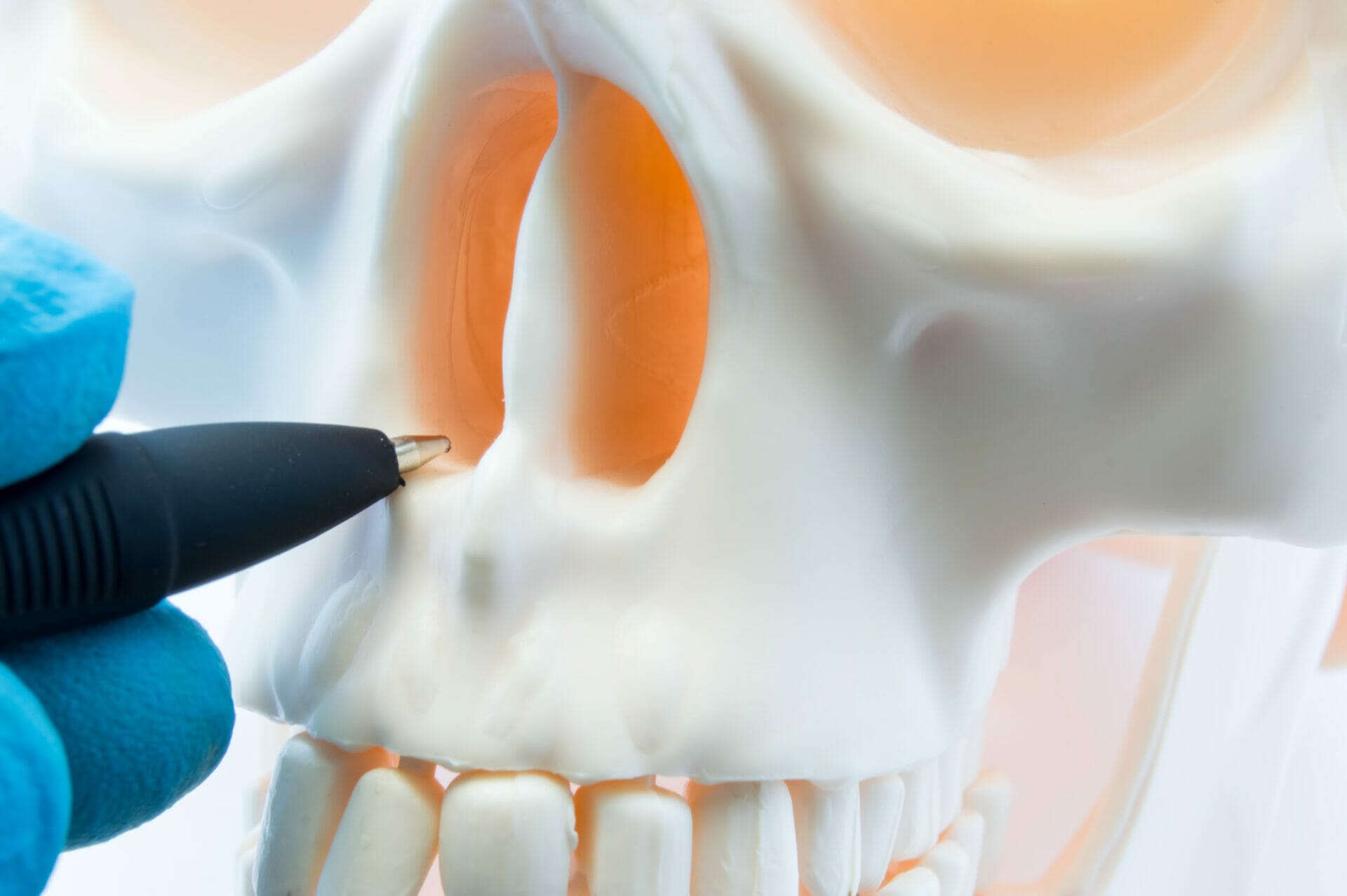You’ve probably heard of people having a deviated nasal septum. You may even know that surgeries can be done for this problem. This article can help you understand deviated septum and what can be done about it. Read on to learn more!
What is a Deviated Nasal Septum?
The septum divides the nose into the right and left sides. This creates two passageways through the nose that connect in the back. We breathe through these passageways. In many cases, the septum isn’t straight, but instead bends or is displaced to one side (deviates) or just sits crooked. This narrows one or possibly both sides of the nose. This can make it more difficult to breathe through the nose. Like some of the other conditions we’ve written about, deviated nasal septum can be a factor for nasal congestion or stuffiness.
What Causes a Deviated Septum?
Deviated septum is a common condition and studies show that up to 80% of people have it. A few factors can contribute to having a deviated nasal septum. Many of us are born with the septum deviated more to one side. Trauma or injury to the nose can also cause the septum to become deviated.
Symptoms of a Deviated Septum
While many people have a deviated septum, not everyone has symptoms. Common symptoms include:
- Difficulty breathing through the nose. Typically one nostril is always more blocked than the other, but in certain situations, a deviated septum can cause blockage on both sides.
- Nosebleeds. When the septum makes one nostril more narrow, that side may become more dry and cause bleeding from the septum
- Crooked nose. In some cases, a deviated septum can cause the outside of the nose to look crooked.
What is Septoplasty?
Septoplasty is a surgery to straighten the middle part of the nose and correct the deviated nasal septum. The most common goal of the surgery is to improve breathing through the nose. Septoplasty surgery is usually done entirely inside the nose and typically does not change the shape of the nose. This surgery is a little bit different than rhinoplasty surgery that deals with the outside shape and function of the nose. However, sometimes a rhinoplasty may be needed along with a septoplasty to help you breathe better. Many times a related procedure, called inferior turbinate reduction, is done at the same time as septoplasty to help with breathing through the nose.
If you have persistent difficulty breathing through your nose, talk to your doctor about these symptoms. Your doctor may refer you to an otolaryngologist that can make the diagnosis. Sometimes a short exam in the office called nasal endoscopy can help with the diagnosis (and rule out other causes for these symptoms).
Visit the SinusHealth website for more information on causes of nasal blockage. Our board-certified otolaryngologists provide trusted answers to your questions. Get in touch with us if you need help finding a rhinologist. Feel free to also contact us online!

